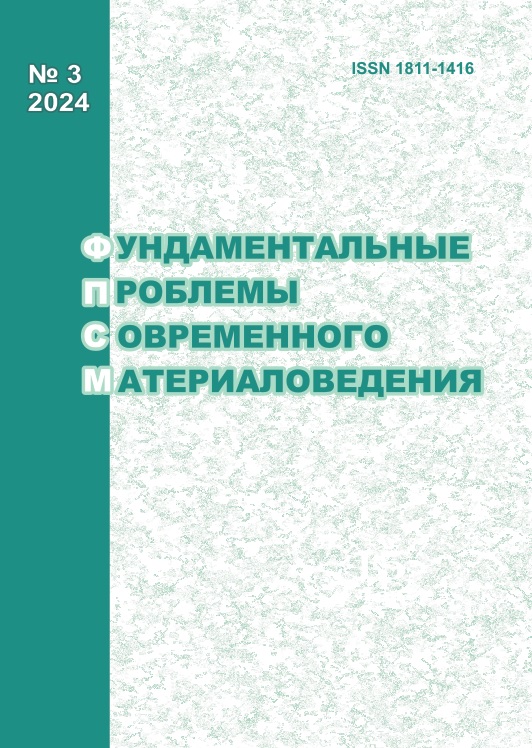BIORESORBABLE COMPOSITE MATERIAL BASED ON IRON WITH HYDROXYAPATITE ADDITION
10.25712/ASTU.1811-1416.2024.03.010
Keywords:
Fe-Cu-HA composite, nanopowder, electrical wire explosion, feedstock, bioresorbable materialsAbstract
In this work, bulk composite biodegradable materials from nanopowder of Fe–Cu system and hydroxyapatite (HA) were obtained. The samples were produced by additive formation method based on material extrusion. Varying the powder and polymer parts in the feedstock led to changes in the structural and mechanical properties of the obtained composites. Increase of polymer component in the initial feedstock from 50 to 60 wt. % promotes decrease of porosity of the obtained composites from 20.6 to 8.9 %. Thus, samples 45Fe–Cu–HA were characterized by the highest mechanical properties in tensile tests: yield strength σ0,2=110 MPa and tensile strength σв=150 MPa. Thus, Young's modulus of all alloy samples is close to the value of cortical bone tissue modulus (≈ 15 GPa). The study of microhardness showed that the values of this parameter exceeded the values of pure iron more than 2 times. The corrosion tests demonstrated that the addition of a minimal amount of polymer part (50Fe–Cu–HA) showed the highest corrosion rate, which makes it more attractive for its application in the fabrication of a biodegradable implant.











 Journal «Fundamental’nye problemy sovremennogo materialovedenia / Basic Problems of Material Science»
Journal «Fundamental’nye problemy sovremennogo materialovedenia / Basic Problems of Material Science» This work is licensed under a
This work is licensed under a 
